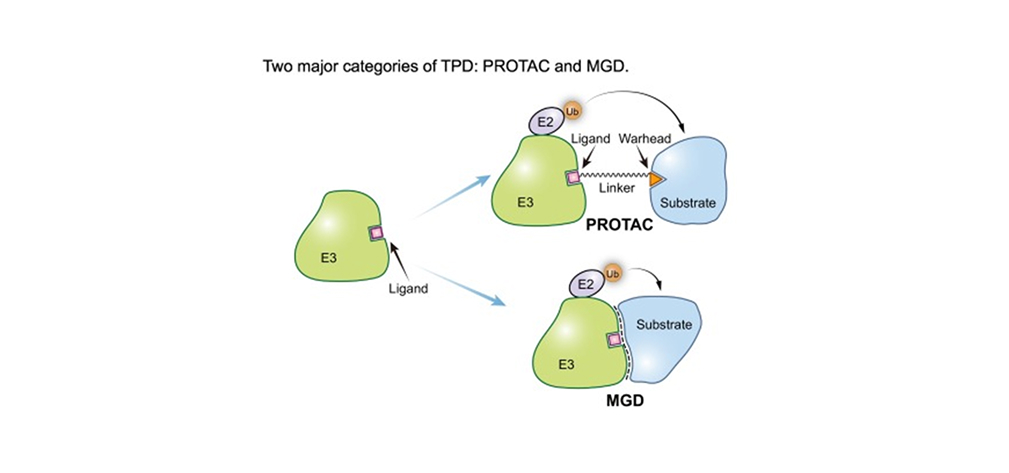We have a broad portfolio of programs
in clinical and research stages
TGD/MGD Program
-
01.About the Program

Souce :Liu, Yanfen et al., Routes to molecular glue degrader discovery, TIBS, Volume 50, Issue 2, 134 – 142
Genosco's TPD/MGD program is based on an innovative approach that utilizes Targeted Protein Degradation (TPD) and Molecular Glue Degrader (MGD) technologies to eliminate proteins that are difficult to target with traditional drug development methods. The program aims to successfully target undruggable proteins and develop therapies for various diseases.
The TPD/MGD program at Genosco also focuses on developing innovative therapies by combining Targeted Protein Degradation (TPD) technology with Antibody-Drug Conjugate (ADC) technology using DAC (Degrader-Antibody Conjugate) technology. Specifically, DAC is designed to selectively act on certain cancer cells by conjugating an MGD (Molecular Glue Degrader) that targets GSPT1 to an antibody. This approach is expected to offer higher selectivity and efficacy compared to traditional ADCs that use cytotoxic drugs. The DACs developed based on Genosco's candidate compounds have demonstrated remarkable efficacy in various solid tumors and are expected to provide new therapeutic options that overcome the limitations of existing therapies through further research.
-
02.Current Progress
The TPD/MGD program is currently in the discovery stage.
-
03.About the Disease
MYC-driven cancers include various types of cancer caused by the overexpression of the MYC gene, which plays a crucial role in tumor formation. MYC is a transcription factor essential for cell growth, division, and metabolic regulation, and has a significant impact on the development and progression of cancer. However, MYC is challenging to target with conventional small molecule drugs due to the lack of a binding pocket. Genosco's TPD/MGD program aims to provide a therapeutic effect for MYC-driven cancers by using MGDs to degrade proteins associated with MYC. This approach represents a significant innovation that could offer new hope to patients for whom conventional therapies have been limited.